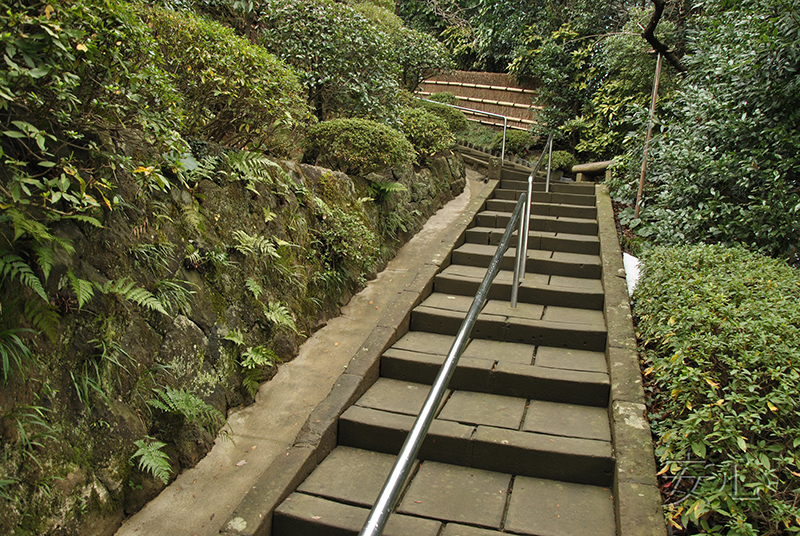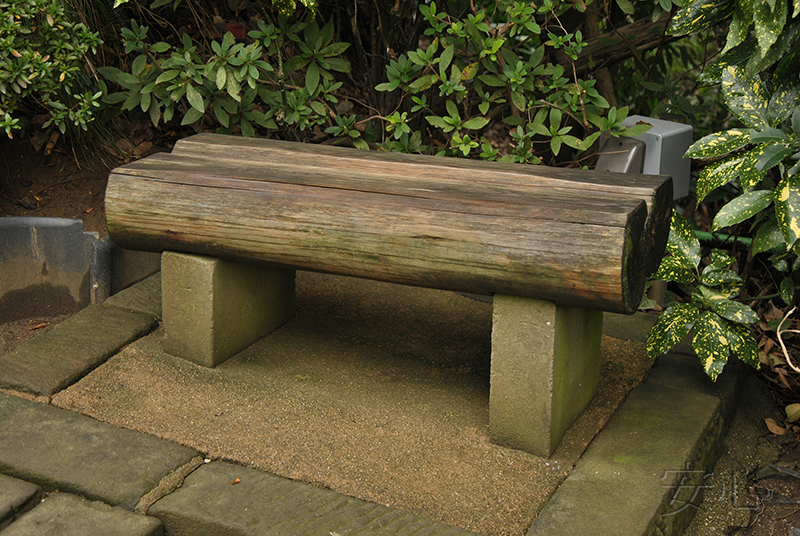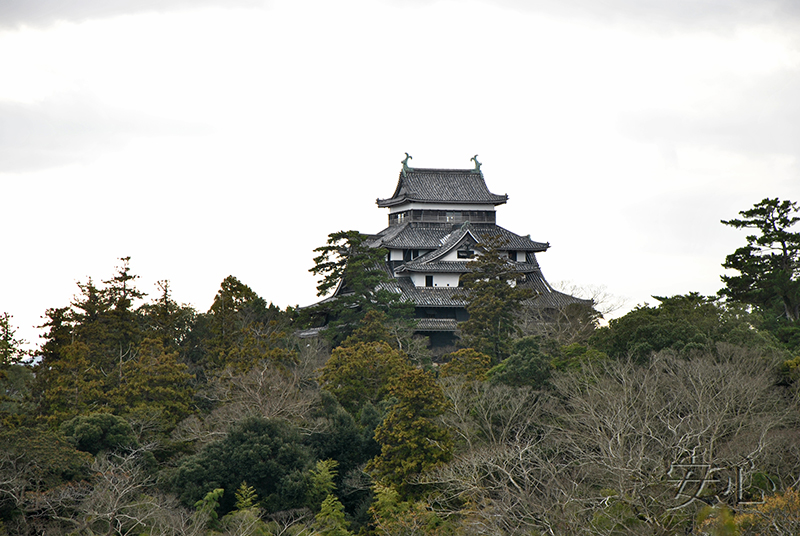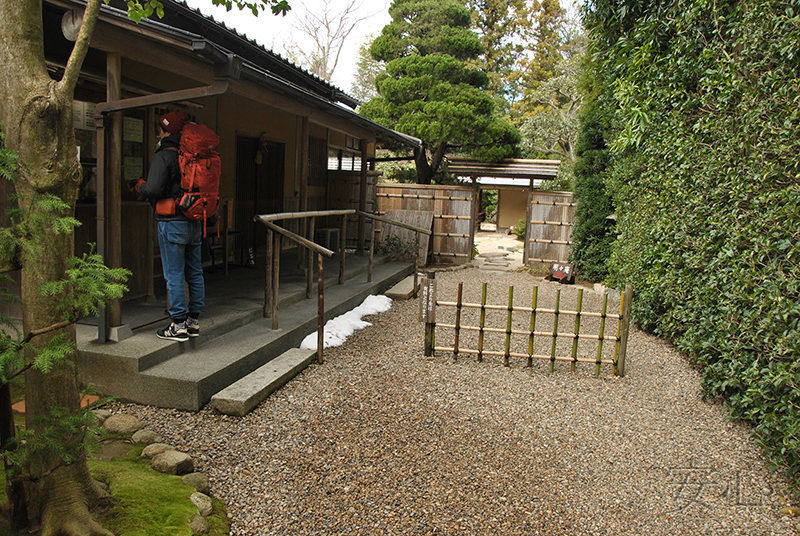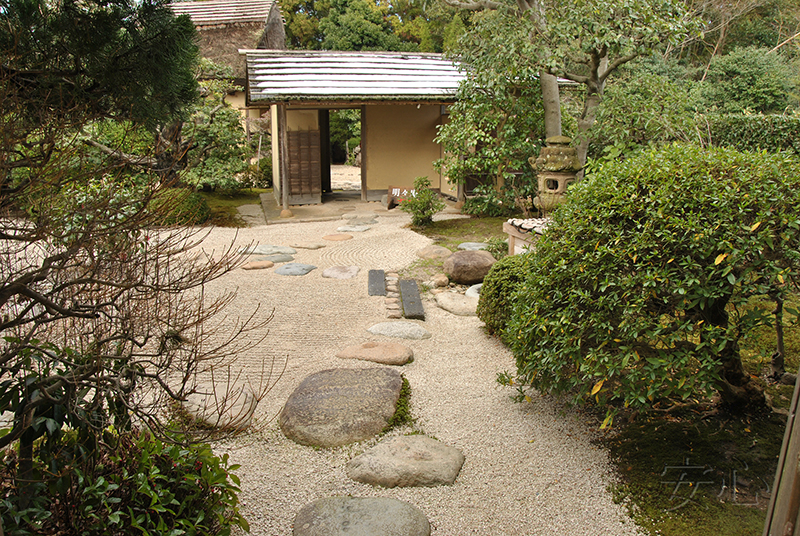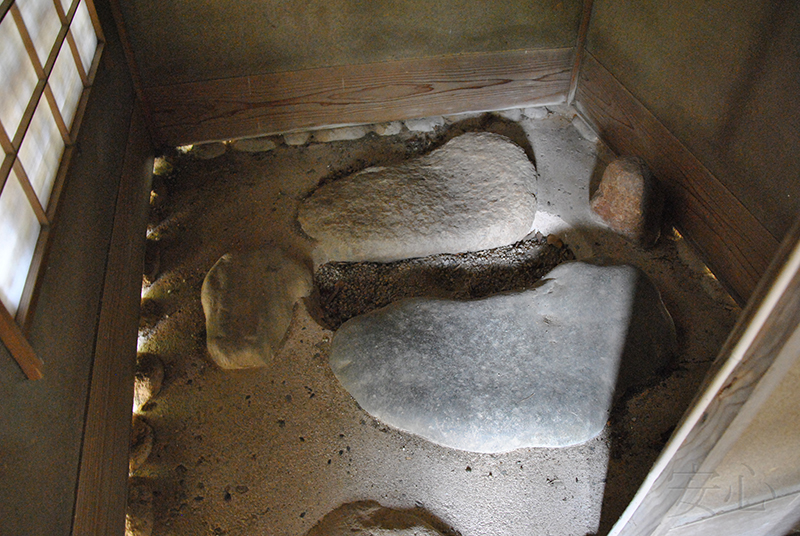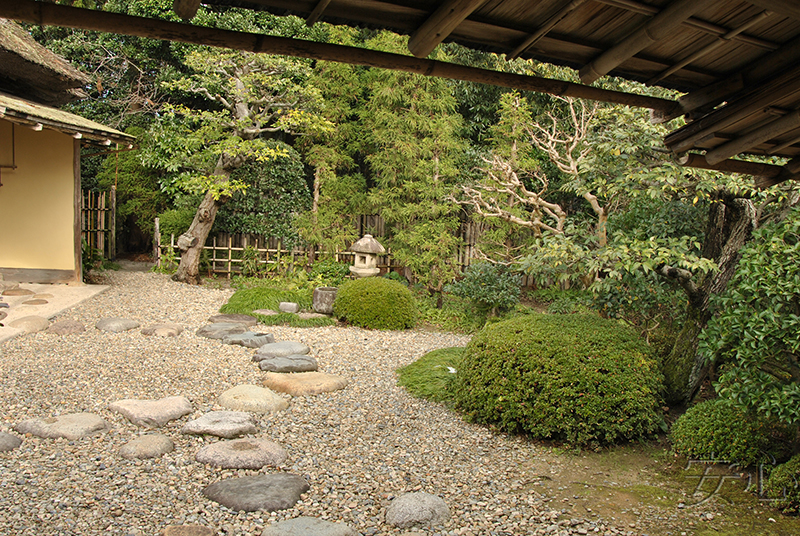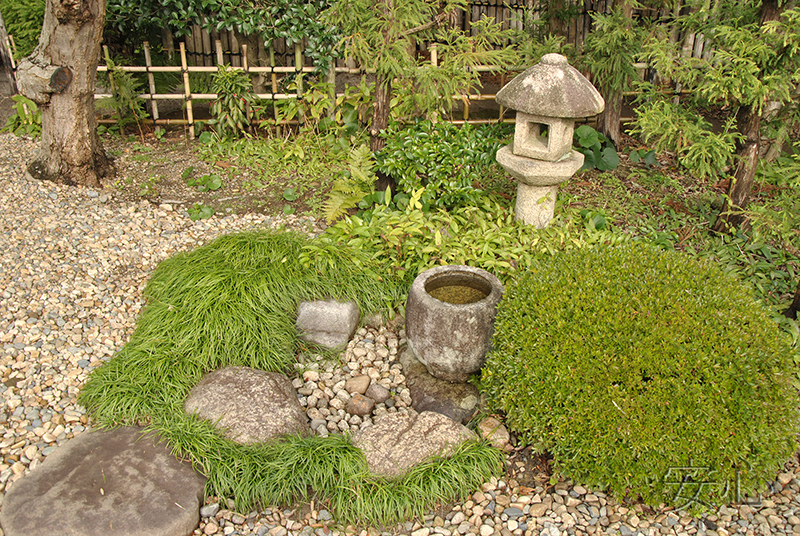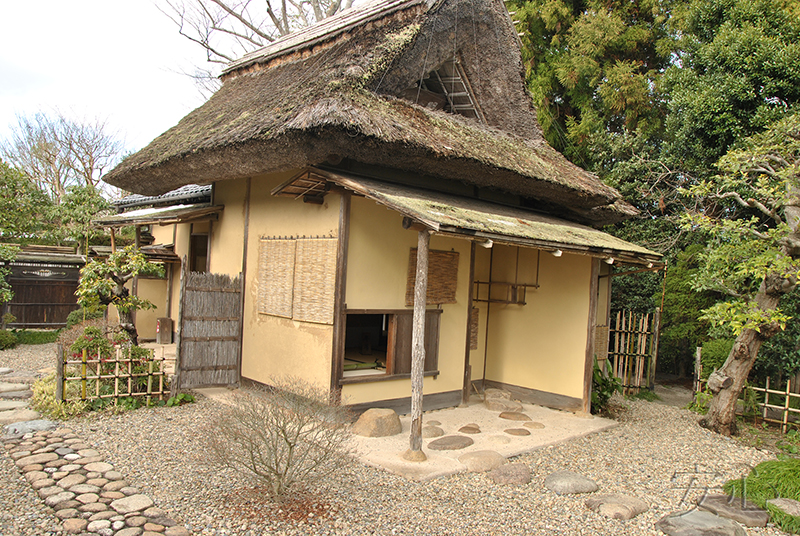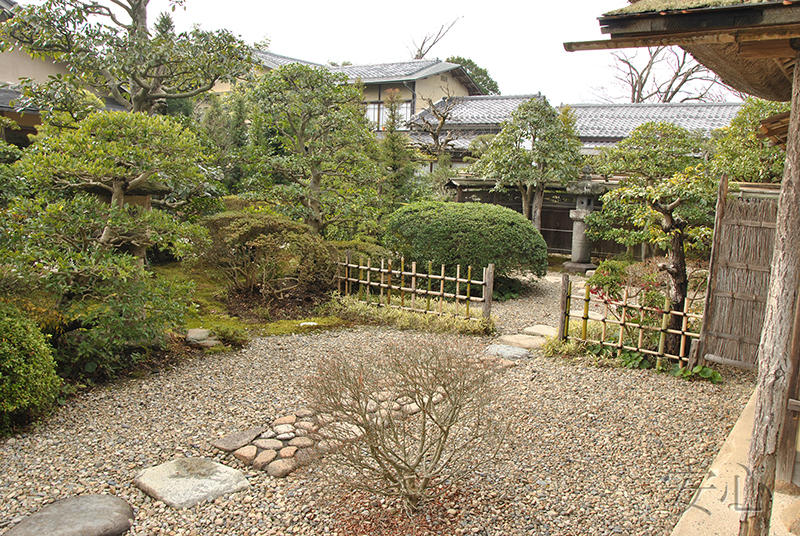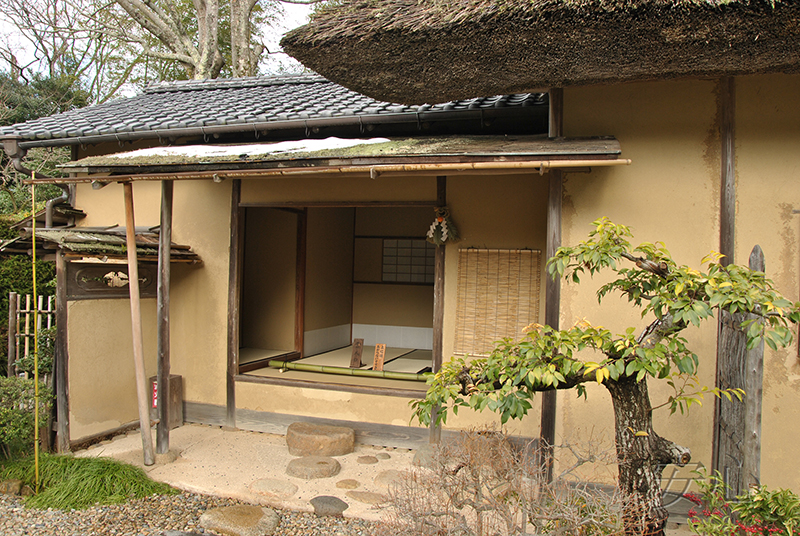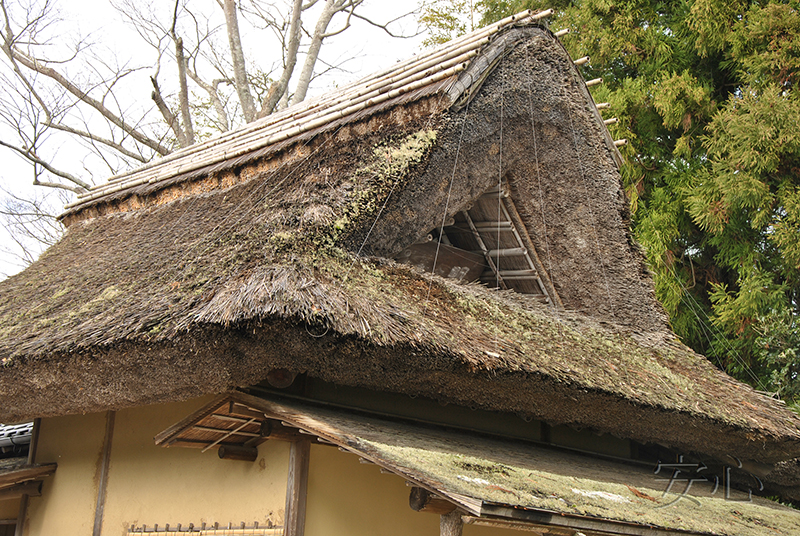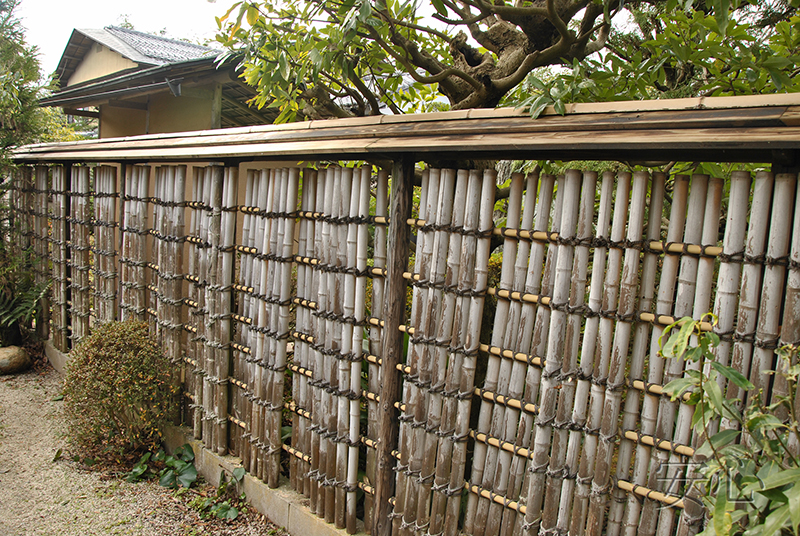
Meimei-an Tea House
In Matsue, we visited the Meimei-an Tea House. Unfortunately, there is not as much information about him on the Internet as we would like. On a piece of paper that we got in the reception, it was written that the house belonged to the seventh chapter of the Matsue clan, Lord Fumai (18th century). He did a lot for his city: saved it from floods, developed crafts. Lord Fumai also studied the art of the tea ceremony from a young age. He believed that the tea ceremony should be based on three pillars: the ritual of preparing and serving tea, Zen Buddhism and a special attitude to tea utensils.We decided to get to the tea house on foot. From Matsue Castle we went to the north. We walked along the promenade admiring the former samurai mansions.
Meimei-an Tea House is located on a hilltop. We climbed a very picturesque staircase, surrounded by plants.
Despite the fact that the climb was not very long, somewhere in the middle, the Japanese carefully set up a bench for rest.
Having reached the top, we found here a small garden with a couple of benches.
It offers a wonderful view of Matsue Castle, the main attraction of the city.
Having examined everything, we headed to the entrance of the garden. In front of the gate there is a ticket office.
A stepping-stone path leads to the garden.
Right in the center there is another gate. To their right is a well with Japanese lantern beside.
On the left, we see a place covered with light pebbles. Another stepping-stone path passe leads us to a modern tea house with large windows overlooking the garden.
To enter the traditional tea garden we should pass through a small gate. It is not also a place to relax. On the reverse side there is a bench and a small room.
On this bench you can sit before the tea ceremony and put your thoughts in order.
The room next door is nothing more than a toilet. True, you can't use it, since it is toilet-decoration, “kazari-settin”, installed in a tea garden. During the tea action, sand (or fine gravel) was necessarily renewed in it, which was of great symbolic importance. However, in medieval Japan, the real toilets were like that.
After the visitors had a rest on the bench and cleared their thoughts, they are ready for the next procedure - bathing. The path leads to tsukubai.
Oribe lanterns were traditionally placed next to tsukubai. Often you can see the tones laid on either side of it. The first was intended for a portable lantern in the dark time, on other one the people put hot water on cold days.
There are two entrances to the tea house. The first one is clearly visible from this angle, it is a small hole. It was believed that in tea ceremony everyone is equal, and everyone should crawl through a small uncomfortable door. But! On the left there is another entrance, more convenient. It was for distinguished guests. So not everybody equal ))
And this is that very small hole through which participants of the tea ceremony should crawl.
A small recess in the floor is сhiriana, it has a deep symbolic meaning. If there is a sticks of green bamboo or twigs (leaves) of evergreen shrubs (trees) inside, it means that the owner of the tea house carefully prepared everything for his guests: he cleaned the garden, sprinkled water on roji, etc. It is believed that all the fuss and worldly thoughts of a person invited to tea ceremony should be remained in chiriana, since there is no place for them in the tea room itself.
Well, the most important guests went to another entrance to the tea house along this path.
Entrance for distinguished guests is much larger and very convenient.
It has its own water bowl.
The tea house is very beautiful, some elements are simply amazing!
We really enjoyed the walk around this wonderful place. It will not take much time, but it will give you a lot of impressions. In addition, it can easily be combined with an inspection of the castle and the samurai quarter.
anshin©2011All rights reserved. When using the materials of the site, reference is obligatory.
Proposals for co-operation, as well as comments and suggestions on the site please send to the address: anshinsad@gmail.comtel: +7 (965) 121-80-60, 10am-20pm

